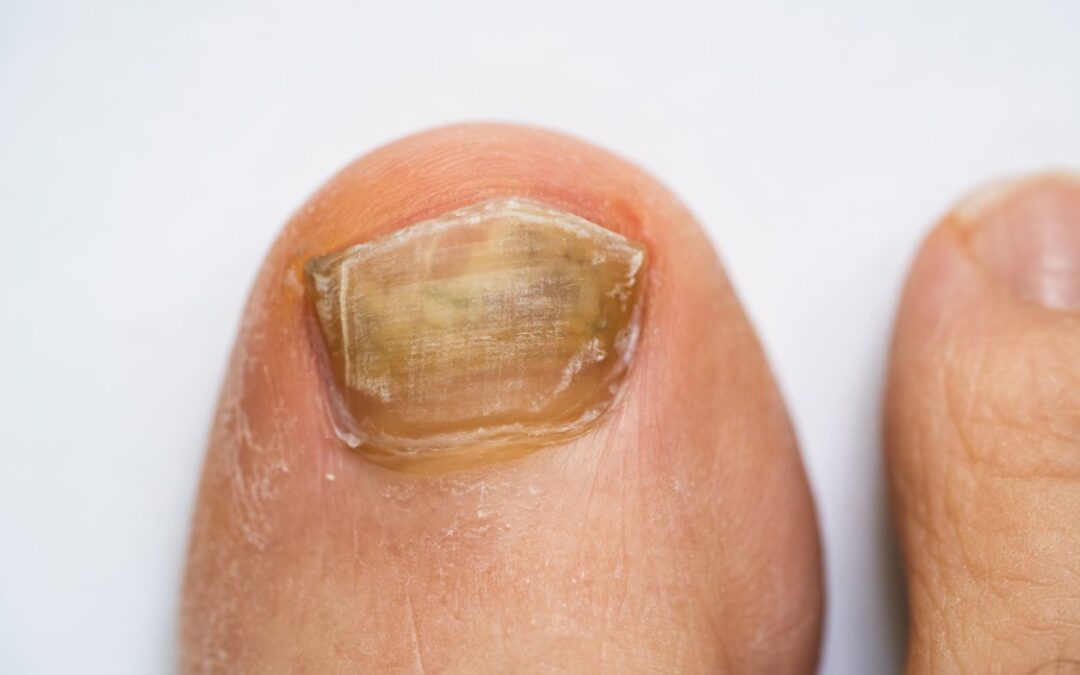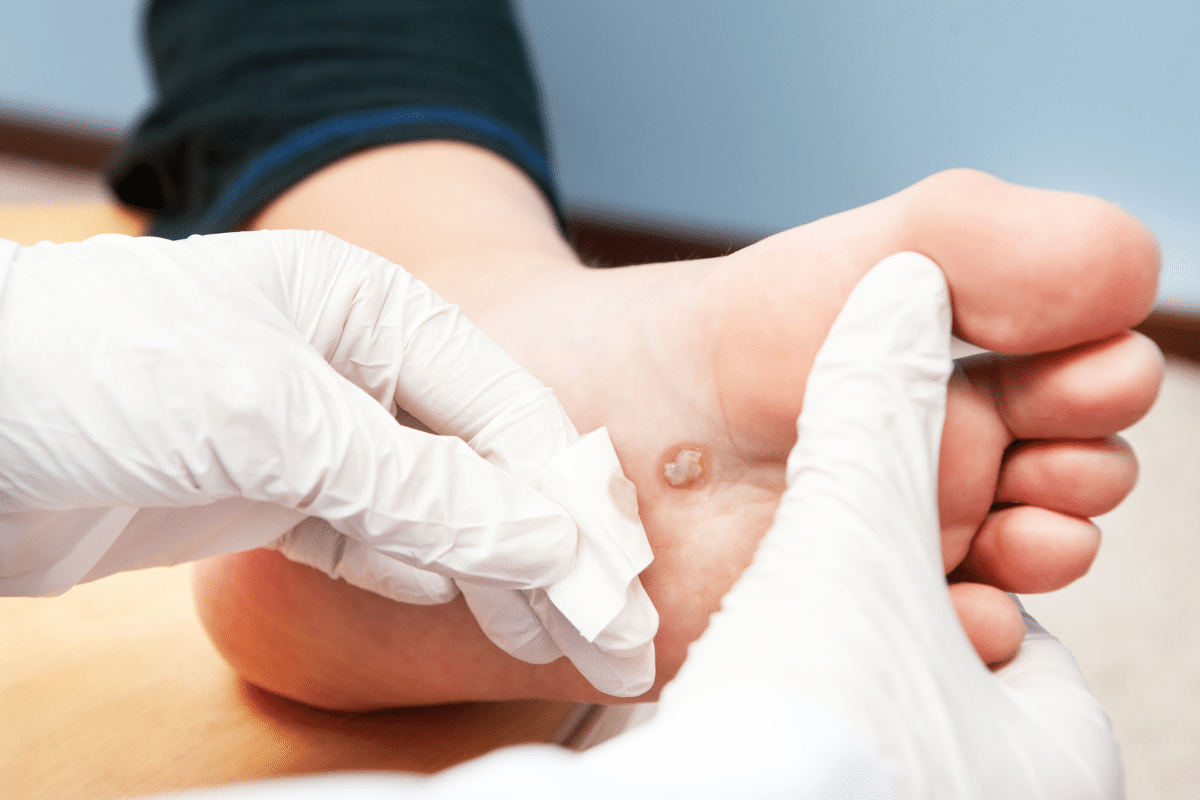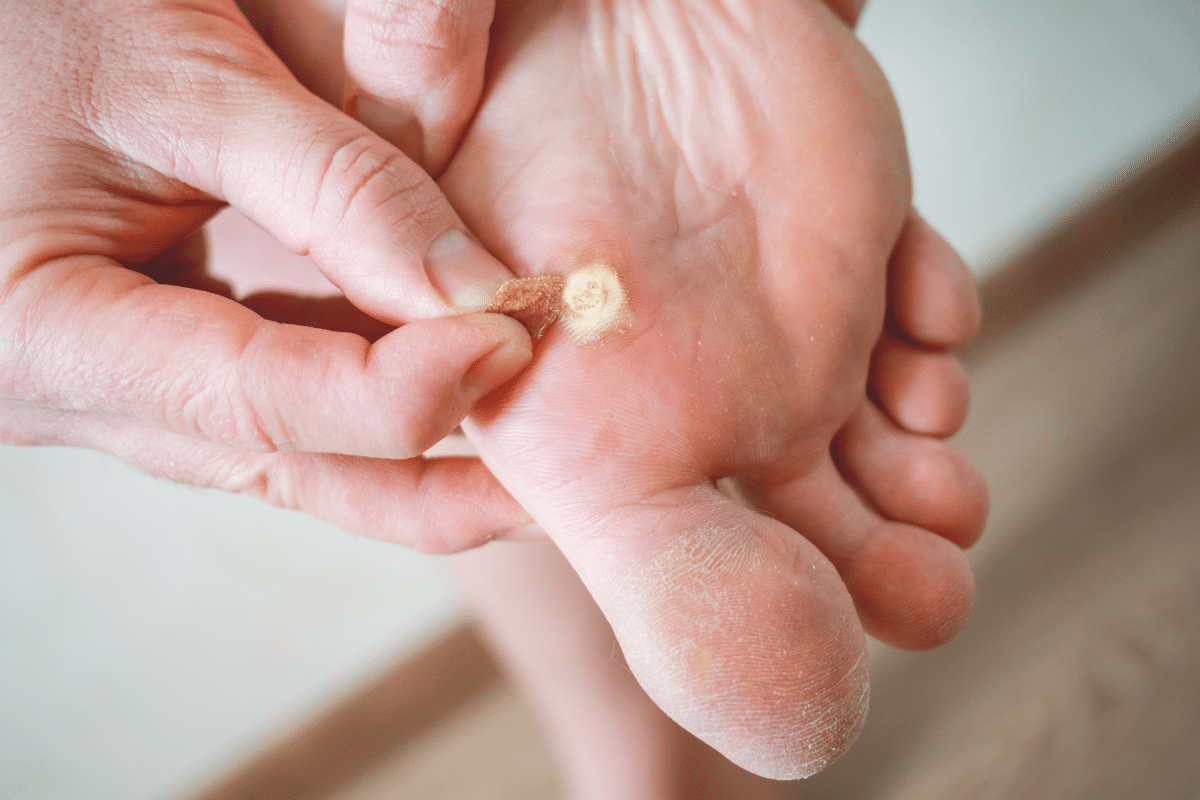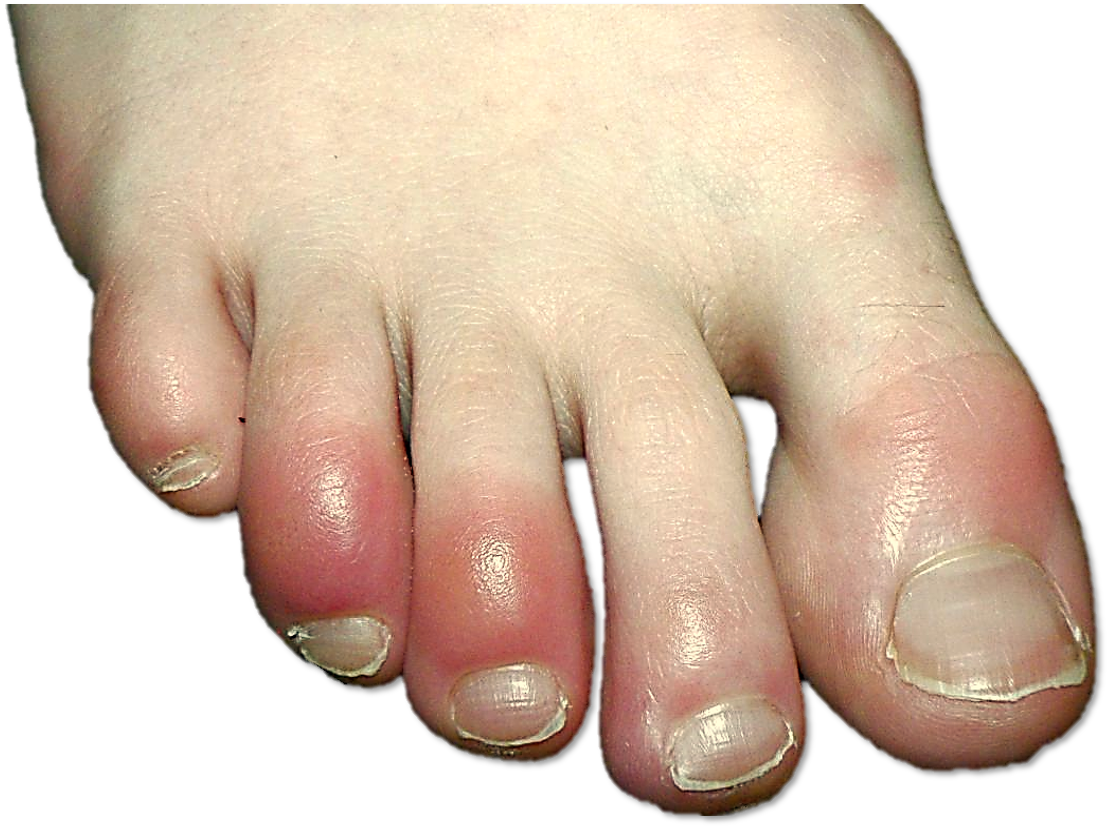Fungal Nail Infections: Sneaky Problems Hiding in Your Toenails
Fungal nail infections, also called onychomycosis, are more than just a cosmetic issue. They often start small, as a white or yellow spot beneath your toenail, but can cause your nail to change colour, thicken, and even crumble at the edges over time. Different types of fungi, like dermatophytes, yeasts, and moulds, can cause these infections. Factors like trauma, sweaty feet/shoes, a weakened immune system, and increased age can make you more likely to get them. Some common presentations of a fungal nail include:
- nail discoloration
- thickening
- brittleness
- or even a bit of a bad smell.
It’s important to spot these signs early because fungal nail infections can persistent for a long time if not treated and might spread to other nails.
Getting a Diagnosis and Treatment from a Podiatrist
Finding out if you have a fungal nail infection means a podiatrist will look at your nail and might take clippings or scrapings for testing. This helps figure out what kind of fungus is causing the problem and what treatment will work best. Treatments vary depending on how bad the infection is and your health. Our podiatrist will go through all the conservative measures to help treat the fungal nail which may include:
- Educating you on adequate foot, nail, and footwear care
- Recommending a topical antifungal (ointment, cream, liquid)
- Cut away some of the diseased fungal nails and reduce any thickness that may have been caused by the fungal infection. This tends to help greatly in the topical over the counter medications working
- Laser therapy – research has shown some growing support for laser therapy and fungal nail infections.
- Communicating with your GP and discussing a possible oral antifungal medication
- In more advanced cases the nail can be removed and the nail bed thoroughly cleaned
Tips for Preventing Infections and Taking Care of Your Toes
Keeping your feet clean and dry is key to avoiding fungal nail infections. Cut your nails short and keep them clean to stop bacteria and fungi from growing underneath. Wear shoes that let your feet breathe and socks that keep moisture away (cotton or bamboo charcoal socks work great!). Be mindful in some public places like gym showers and pools where fungal infections can be more likely transmitted. And, if you often go to nail salons, make sure they are using sterile equipment as this is a common way we see fungal infections transmitted. While home remedies and store-bought treatments are popular, they might not always work. If you have a stubborn infection, it’s best to see a podiatrist.




